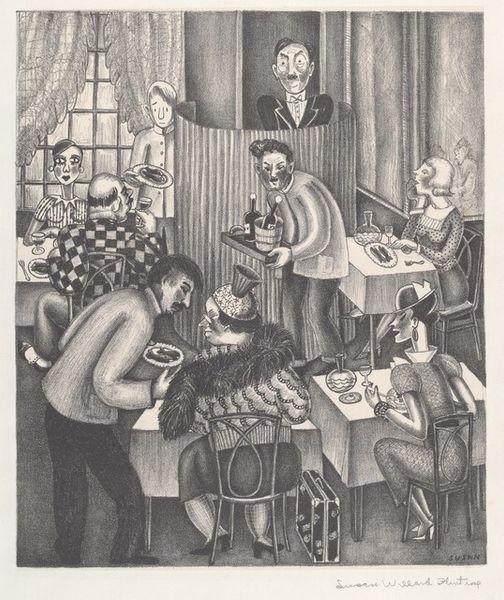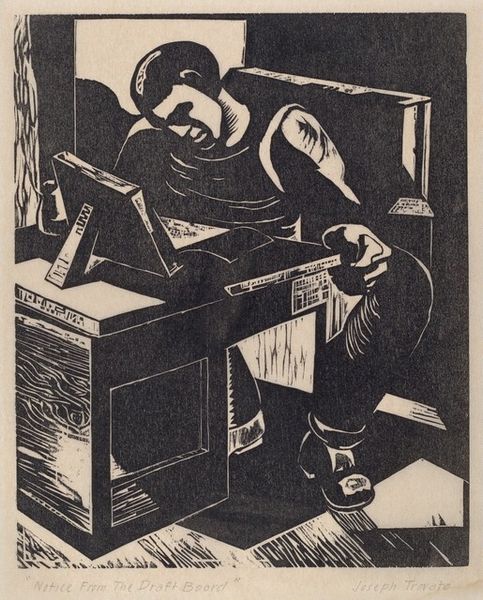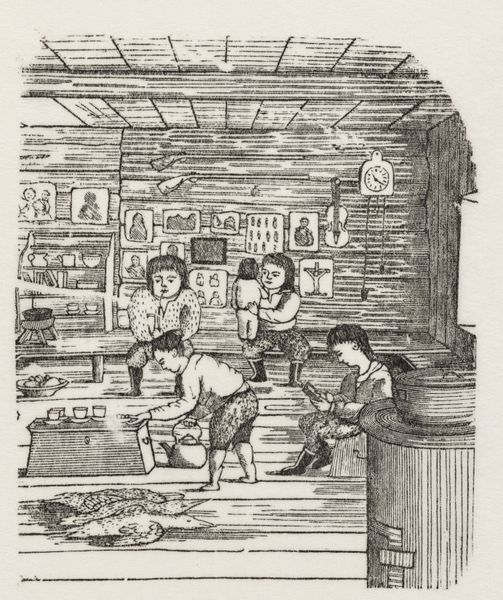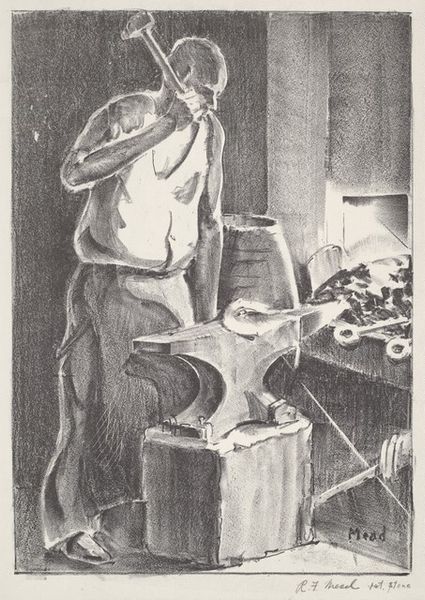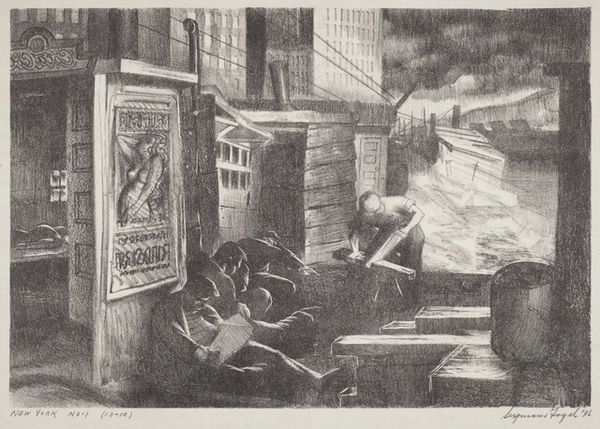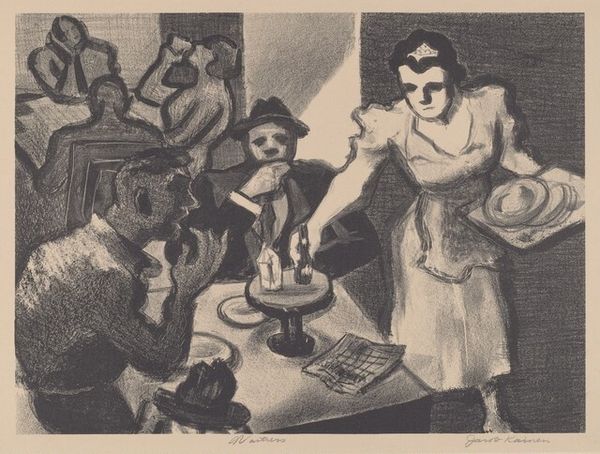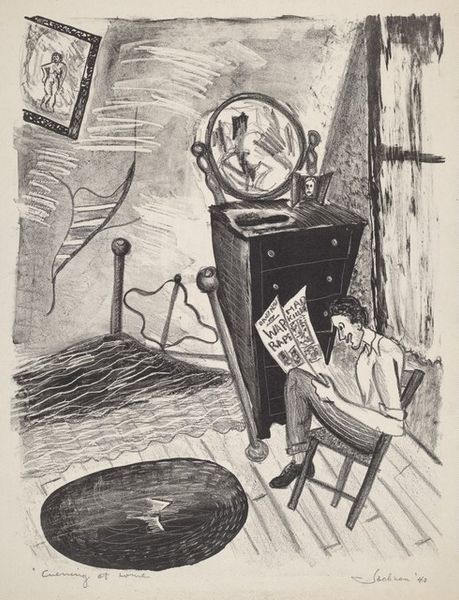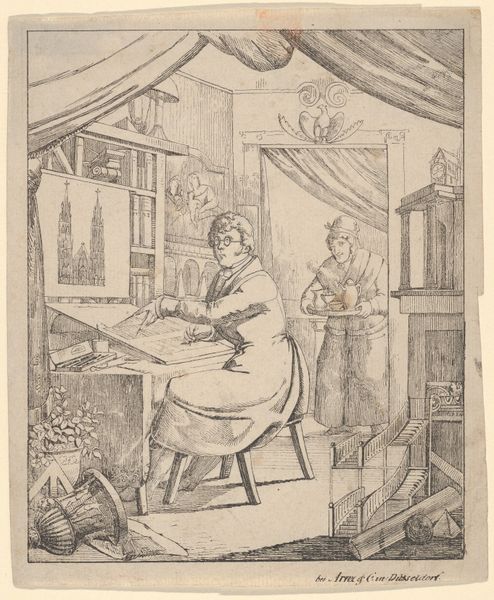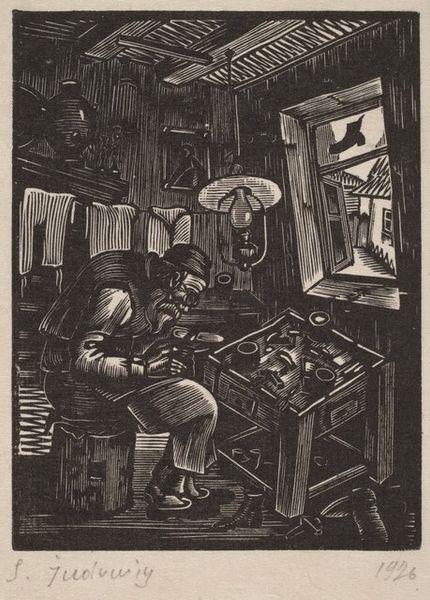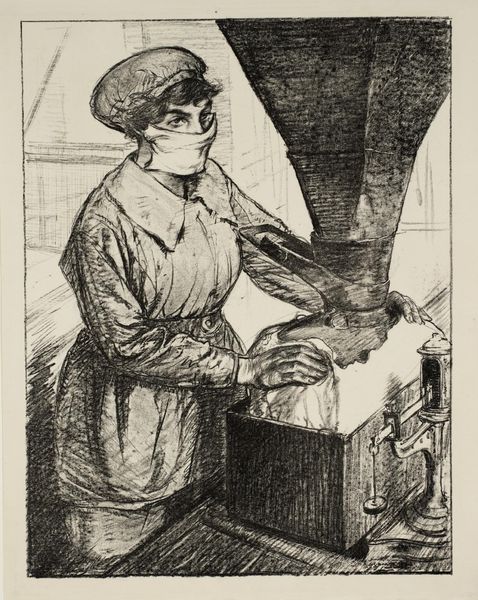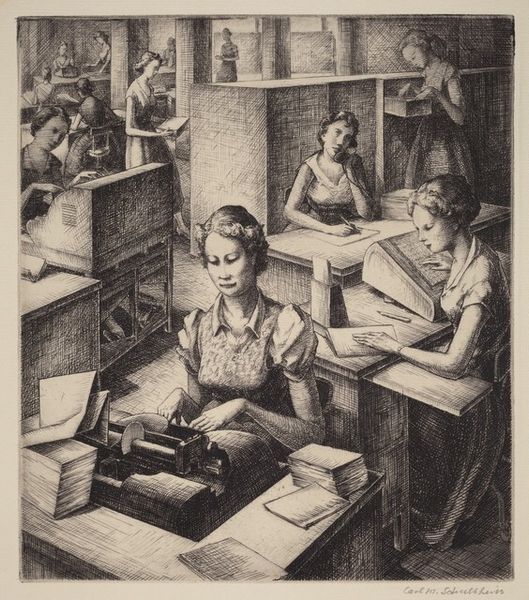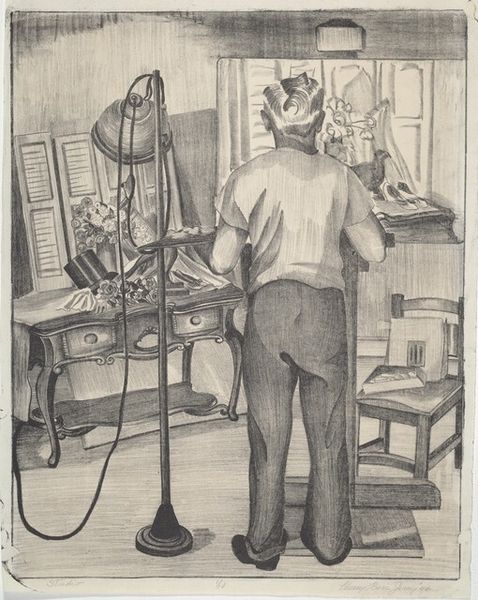
drawing, print, pencil
#
portrait
#
drawing
# print
#
pencil sketch
#
pencil
#
genre-painting
#
realism
Dimensions: image: 279 x 229 mm paper: 406 x 292 mm
Copyright: National Gallery of Art: CC0 1.0
Editor: Here we have Bernard Brussel-Smith's "Mario's" from 1940, a pencil drawing and print. It has a casual and perhaps melancholic atmosphere. What socio-cultural context do you think is relevant here? Curator: The artwork provides an interesting snapshot of urban social life in 1940s America. The depiction of Mario’s restaurant, filled with distinct characters – the suited waiter, the diverse clientele, even the cat perched on the partition – points towards a specific type of public space. What's striking is the visual separation, isn’t it? The foregrounded, solitary woman against the background hubbub. Editor: I noticed that too. She almost seems disconnected, lost in thought while everyone else is engaged in conversation. Curator: Exactly. Consider the role of such establishments during this era. They were gathering places, often embodying class divisions and social rituals. Who was allowed in? How were they expected to behave? The sketch provides access to this public life. We could analyze the clothing and postures of the figures. The woman’s isolation maybe speaks to wider social themes about gender and identity during that time. Does that make sense? Editor: That does make sense. So the artist is not only capturing a scene, but perhaps making a commentary on the social dynamics present? Curator: Precisely. Brussel-Smith gives us insight into how people related in this specific time and space. Even the seemingly casual detail of the cat creates an unexpected tension between the artificial and real world. What impact do you think that has? Editor: It humanizes it in a way, adding an element of warmth or domesticity to an otherwise possibly formal place. It changes the power dynamic. Curator: Agreed. It’s also important to consider this within the context of artistic production during the Depression and the lead up to World War II. There’s a distinct interest in documenting everyday life. Editor: It is fascinating to view this slice of life through that lens. Thank you. Curator: It provides insight into the cultural relevance, making it valuable as social and historical documentation.
Comments
No comments
Be the first to comment and join the conversation on the ultimate creative platform.
